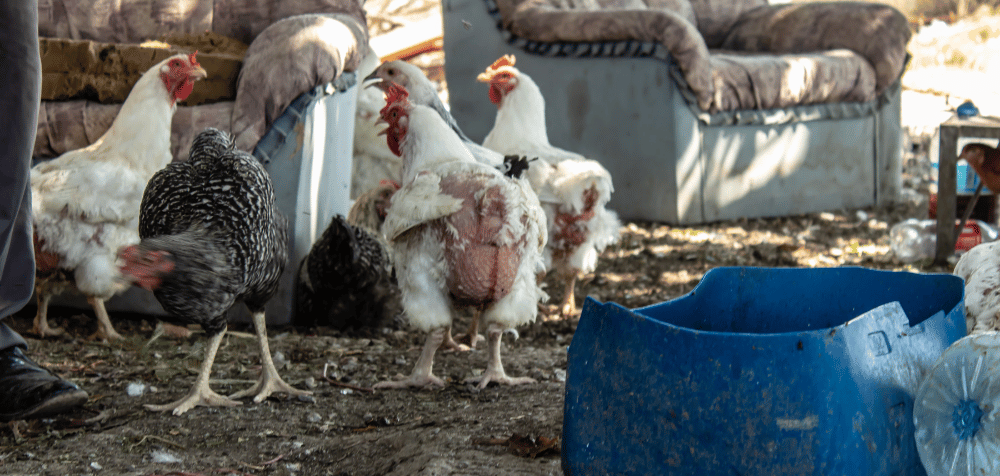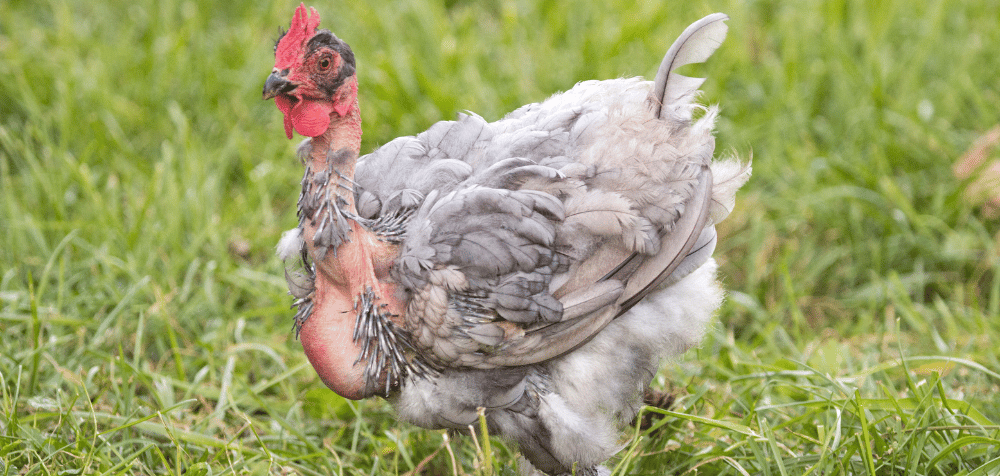Chicken molting is a natural process that can be both fascinating and a bit concerning for chicken owners, especially if you’re not sure what to expect.
Whether you’re new to keeping chickens or have been raising them for years, understanding chicken molting is essential for maintaining healthy and happy chickens.
Today I would like to walk you through what chicken molting is, how it affects your chickens, and most importantly, how you can help them through this process.
What Is Chicken Molting?
Molting is the process where chickens shed their old feathers to grow new ones. It typically occurs once a year, usually in the late summer or early fall, although some chickens might molt at different times. The process allows them to refresh their plumage, which is crucial for insulation and protection.
During molting, a chicken may look a little worse for wear, with patchy feathers and sometimes even bare spots. While it can be alarming to see your chickens looking scraggly, molting is completely normal and an essential part of their growth cycle.
Why Do Chickens Molt?
Molting serves a very practical purpose. Chickens rely on their feathers to stay warm and dry, especially during the colder months. Over time, feathers can become worn out, broken, or dirty. Molting allows them to replace these old feathers with new, vibrant ones that provide better insulation and overall health.
Here are some reasons why chickens molt:
- Seasonal Changes: As the days get shorter, chickens naturally begin to molt to prepare for winter.
- Age: Older chickens molt more regularly than younger ones.
- Hormonal Changes: Molting is driven by changes in a chicken’s hormones, which are triggered by daylight and seasonal changes.
- Stress: Sometimes, chickens can experience a “stress molt” if they encounter significant stressors like changes in environment, illness, or poor nutrition.
What to Expect During Chicken Molting

Molting can look different for each chicken. Some might only lose a few feathers at a time, while others will go through a more dramatic transformation. It’s important to know what to expect so you don’t mistake the process for illness or poor health.
Stages of Chicken Molting
There are several stages in the molting process, and understanding them can help you recognize how far along your chickens are:
- Initial Feather Loss: Molting usually begins with the feathers around the head and neck. You might notice some patchy spots where feathers are falling out.
- Middle Stage: Feather loss will spread down the body to the back, chest, and wings.
- Late Stage: The tail feathers will be the last to go, leaving your chicken looking rather bare.
- Regrowth Stage: After feather loss, new pin feathers will begin to grow in, starting from the head and working down the body. These feathers look like small spikes at first, but will gradually unfurl into full feathers.
How Long Does Chicken Molting Last?
Molting can last anywhere from 8 to 16 weeks, depending on the individual chicken and its breed. While some chickens may complete the process in just a couple of months, others can take longer. Keep in mind that molting is more than just losing feathers – growing new feathers takes time and energy.
Impact on Egg Production
One of the most noticeable effects of chicken molting is a reduction in egg production. Chickens typically stop laying eggs during this time because their body is focusing its energy on growing new feathers. Don’t worry—once the molting process is over, they’ll resume laying eggs, often with more consistency and better quality.
How to Help Chickens During Molting
Even though chicken molting is a natural process, there are several things you can do to make your flock more comfortable and ensure they stay healthy.
1. Provide Extra Protein
Feathers are made up of about 85% protein, so during molting, chickens need extra protein in their diet to help them grow new feathers. While they typically eat layer feed, which is lower in protein, consider switching them to a higher protein feed during the molting season. You can also supplement your chickens diet with high-protein treats such as:
- Mealworms
- Scrambled eggs
- Cooked fish
- Peas and sunflower seeds
These protein-rich foods will help speed up feather regrowth and ensure your chickens have enough energy.
2. Minimize Stress
Molting can be a stressful time for chickens, and added stress can slow down the process. Try to keep their environment as calm and stable as possible. Avoid introducing new flock members or making significant changes to their coop. Handle them gently, as molting chickens can be sensitive to touch due to new feather growth, which can be itchy or uncomfortable.
3. Keep the Coop Clean and Cozy
Molting chickens are more vulnerable to the elements, as they have less feather coverage to keep them warm and protected. Ensure their coop is well-insulated and clean, with plenty of fresh bedding. As new feathers grow, chickens might be more prone to skin irritation, so keeping their living area clean is essential to prevent infections.
- Ensure adequate ventilation in the coop.
- Provide extra bedding during colder months.
- Regularly clean out old feathers from the coop to avoid buildup.
4. Fresh Water and Nutrients
Make sure your chickens have access to clean, fresh water at all times. Hydration is critical for overall health, and molting chickens need extra water to support feather growth.
In addition, consider adding a vitamin supplement to their water to give them a nutrient boost.
5. Be Patient and Observant
While molting is a natural process, it’s essential to keep an eye on your chickens to ensure they’re not experiencing any health issues.
Chickens going through a hard molt can sometimes look lethargic or out of sorts, but this should pass. If you notice any signs of illness, such as wheezing, coughing, or a decrease in appetite, it’s worth looking into this further or in some cases consulting a veterinarian.
When Should You Be Concerned?

While molting is generally normal, there are some situations where you might need to intervene. If your chicken is molting out of season, or if molting lasts longer than 16 weeks, it could be a sign of underlying stress or illness.
Similarly, if your chicken is losing feathers in patches that don’t grow back, it might indicate parasites or mites. Always keep an eye on their behavior and feather regrowth to ensure everything is progressing smoothly.
Signs to Look Out for:
- Feather loss outside of molting season
- Lethargy or lack of appetite
- Inflamed or irritated skin
- Prolonged period without new feather growth
If any of these symptoms arise, it’s a good idea to consult a vet or an experienced chicken keeper to rule out more serious issues.
Final Thoughts on Chicken Molting
Chicken molting is a natural and essential process that every chicken owner should understand. Although it might look concerning at first, with the proper care and attention, your chickens will grow back their feathers and return to full health in no time. By providing extra protein, minimizing stress, and keeping their coop clean, you can help your chickens through the molting process with ease.

